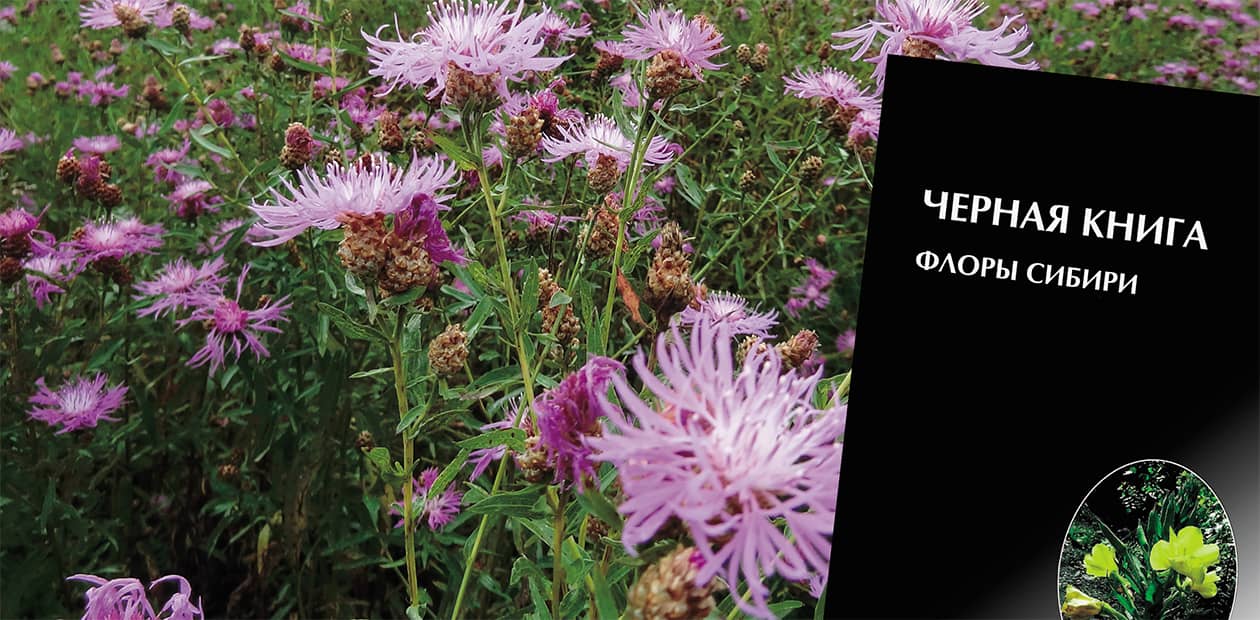The Black Book of flora: ALIENS
An individual plant of the common dandelion produces 5 thousand seeds, and this is not a record: in goosefoots and mugworts, the number can be 40 times greater. K. A. Timiryazev (1949), a renowned Russian naturalist, estimated that if all seeds of a dandelion germinated, in ten years, its progeny would amount to 1020 individuals! They would require a territory 15 times greater than the surface area of our planet. Why haven’t the most aggressive plants conquered the world yet?
With their colossal seed productivity, plants cannot actively move, and compensate using a number of adaptations to disperse their seeds, allowing them to spread using wind (barrochores), water (hydrochores), animals (including humans), etc.
In many plants, high molecular weight substances covering their seeds absorb water and turn into slime, which allows them to stick to moving objects and cover great distances, including whole continents. This is how plantago came to North America, and came to be known as «white man’s footprint» among some Native Americans. The spikelets of grains, with their long bristle-like awn, can travel great distances and literally screw into the ground. For instance, the spiral awn of needle grasses curls when humidity changes, and the seed twists into the soil in a corkscrew-like manner up to 7–9 cm (3–4 inches) deep. Nevertheless, plants which are so well-prepared for expansion do not occur everywhere. What is the reason?
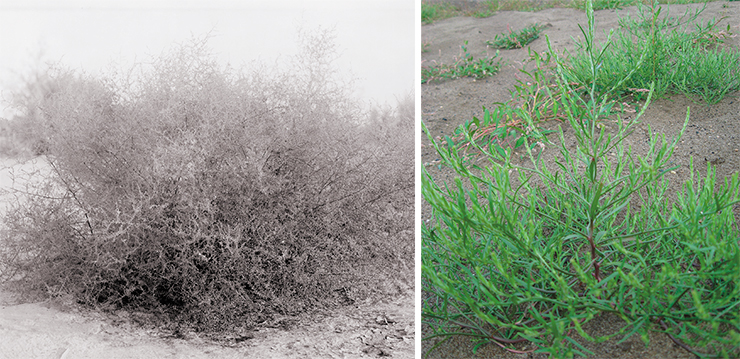
Carl Linnaeus, the famous Swedish naturalist and systematicist, wrote in his Philosophia Botanica in 1751: «places of growth [native land] of plants is defined by the region, climate, habitat and soil». Later, Alexander Humboldt, one of the most influential naturalists of the early XIX century, demonstrated that the distribution of plants across the globe strictly correlates with the distribution of warmth and other climatic parameters limiting their distribution. These observations spurred the development of botanical geography.
Georg Meier, a follower of Humboldt, having studied the climate of forests of the Northern Hemisphere, created a catalog of «parallel» climatic zones and singled out individual zones based on the dominant tree species: lauretum (from the Latin for laurel – Laurus), castanetum (chestnut – Castanea), etc. His tables also contain lists of plants that can be transferred to other zones. This spurred the process of plant introduction, based on artificial transfer.
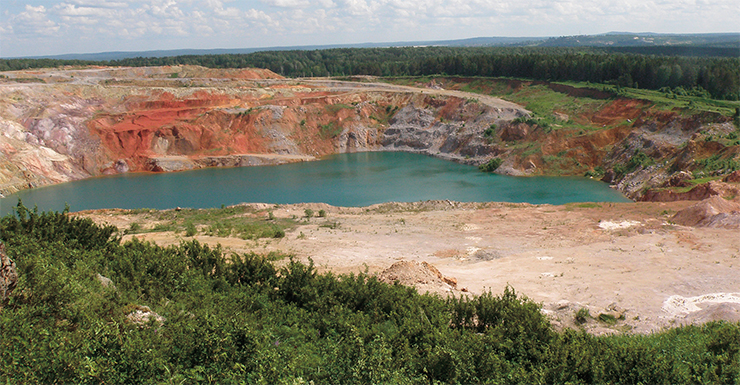
As for natural transfer, in the times of Humboldt, mountain ridges, large water bodies, desert and climatic differences were considered to be reliable barriers to plant migration. Climate changes may cause a plant community to give way to a different plant community, however, it is a lengthy process. But times are changing…
Fruit of globalization
The middle of the XIX century heralded the beginning of the Anthropocene, with its unprecedented anthropogenic and technogenic activity and impact on natural ecosystem. This coincided with global warming – a fact that we must deal with and accept. Raising temperatures were already recorded in the very beginning of the Anthropocene, and in the XXI century, the average temperature will most likely grow by 0.3–1.7 °C.
Globalization can be felt in all aspects of life – politics, economics, and culture. They also create new biological problems. This concerns not only the rapid increase in the number of territories with disturbed soil and vegetative layers, but also the rapid expansion of alien plant species thanks to global migration of human population, commuting and cargo transportation. Moreover, global warming allows thousands of plants species to complete their life cycle and produce seeds in new climatic conditions, including Siberia.
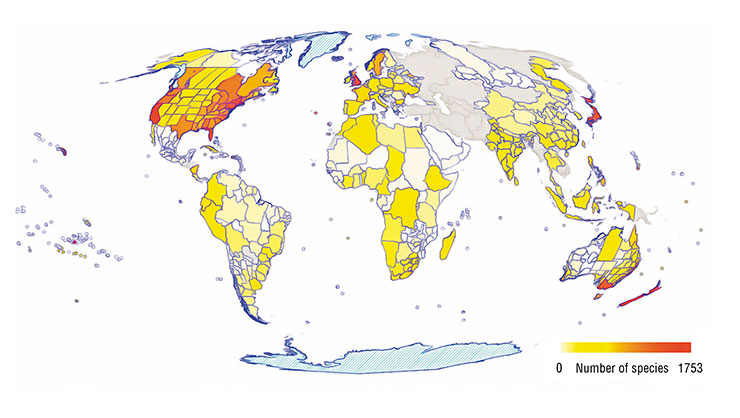
One of the problems that researchers encounter deals with obtaining data from poorly studied regions of the world; another problem consists in the lack of standardization and large regional discrepancies in the botanical nomenclature. Yet, the creation of a global database would let scientists analyze plant “invasions”, making this project a truly unique effort.
Researchers believe that humankind is responsible for the spread of at least 13168 plant species (about 3.9 % of the world’s flora) beyond their native ranges. North America became a new home to 6 thousand alien species, Europe – for over 4 thousand. The highest density of “aliens” is registered on the islands of the Pacific region, which are easier to invade than mainland. In the Northern Hemisphere, the largest donors of alien plants are Europe and non-tropical Asia
There is a category of alien species called invasive species. They actively expand their range and are capable of active reproduction and replacement of local species from natural communities. As the result, they pose a threat to biodiversity, and some can cause economic damage, even though they are not treated as quarantined species. The majority of invasive plant species is avoided by cattle and can be a source of biological pollution by provoking allergies.
Invasive alien species are now rightfully considered the second most important threat to biodiversity, following habitat destruction. The International Convention on Biodiversity, adopted in Rio de Janeiro in 1992, states that the participant countries must prevent the invasion of foreign species threatening their ecosystems, habitats and species, as well as control or destroy the unwanted «immigrants».
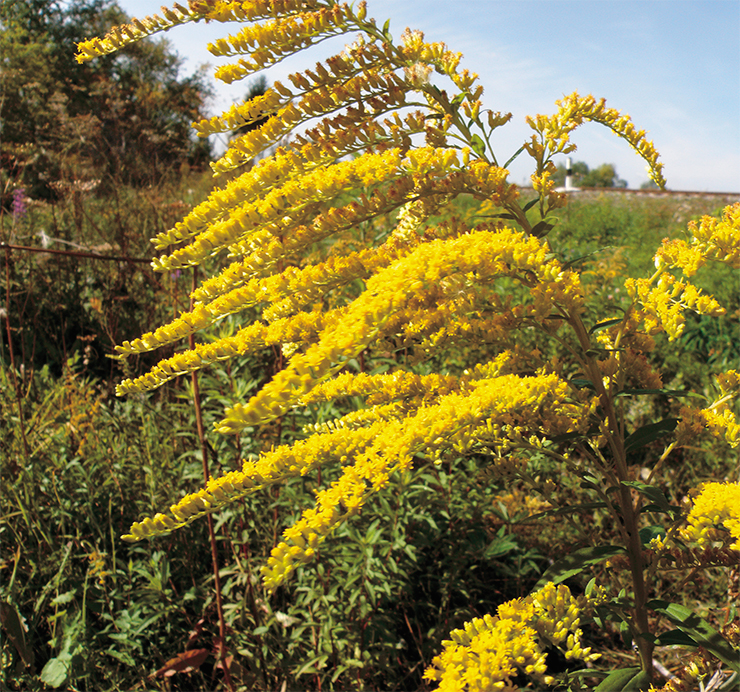
Insular territories and coastlines in tropical and subtropical regions are the most vulnerable to attacks of «migrant» species. Nevertheless, overall, natural ecosystems are amazingly resistant to «alien» invasions.
For instance, in the Lipovyi Ostrov («Lime Island») state natural monument in Kuzbass, a tertiary relic Siberian lime (Tilia sibirica) stand, only 6 % of species are non-native, while in the surrounding flora, their share reaches one-fifth. All these introduced species occur along the only road in the protected territory. This is typical, since disturbed biotopes, including roadsides, edges of fields, old waste banks of coal mines and other types of mining companies are the favorite place for alien species to settle.
The «Black Book» of Siberia
The preliminary list of invasive species of Russia includes 730 species (Vinogradova et al., 2015). In Asian Russia, including Siberia, studies of invasive species began very recently. Due to a number of geographic peculiarities, Siberia is not a major recipient of alien species, and the latter struggle to naturalize in the harsh Siberian climate.
One of the first results of these studies is the list of invasive and potentially invasive species of the Siberian Federal District, which includes 140 species. The surface area of the District, which includes 12 federal subjects (the Republics of Altai, Buryatia, Tyva, Khakassia, the Altai, Zabaikalskiy and Krasnoyarsk Krai, and the Irkutsk, Kemerovo, Novosibirsk, Omsk and Tomsk Regions) is almost 5144 square kilometers (1986 square miles), which constitutes about 30 % of all Russian territory.
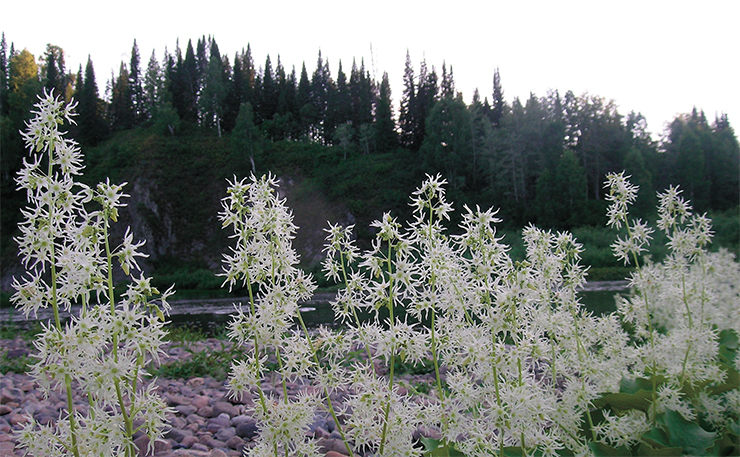
The poison hemlock is a plant of the celery family with large pinnate, finely divided leaves. It can be distinguished from similar related plants by its thick stem covered with purple blotches.
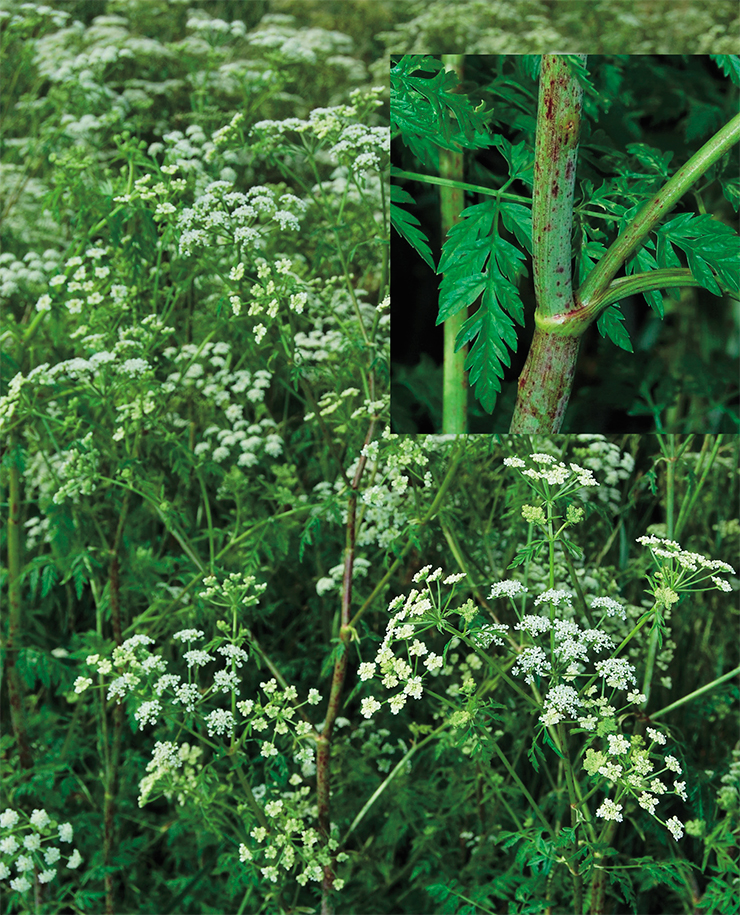
Hemlock is native to Central Europe and the Mediterranean; in Russia, it is indigenous to the Fore-Caucasus and Dagestan. In Siberia, it grows everywhere where there are disturbed soils and sufficient moisture. In recent decades, thick hemlock stands have been expanding fast. A. L. Ebel, a botanist from Tomsk (1917) believes that hemlock was introduced to Siberia at the turn of the XX century. First herbarium specimens were collected around Tomsk and Omsk in the 1890’s; in 1945, hemlock was discovered in the Kemerovo region, and in the 1970’s – in the Altai Kray.
This plant can be recognized by its unpleasant mouse-like smell, which is easy to detect by crushing its leaves between the fingers. The main toxic compounds of hemlock are two alkaloids, conin and gamma-conicein, which act similarly to curare. The toxin acts locally by irritating the skin and mucous membranes and causing inflammation and allergic reactions. Systemically, it paralyizes the central nervous system, without affecting the cerebral hemispheres, meaning that the affected person remains conscious despite the paralysis. Minor intoxication causes weakness, compromised gait, impaired vision and bladder control; serious intoxication may cause death as the result of respiratory muscle paralysis.
While this plant many have some useful properties, its toxicity outweighs all possible benefits
The «Black book of Siberia» (2016) is the fruit of the combined effort of almost all Siberian botanists who work with invasive plants: it includes 58 species that present ecological and economical danger to the region. Their distribution in the Siberian Federal district has been found to be rather uneven. The Altai Krai (53 species) and Kemerovo region (50 species) have the most invasive species; the lowest numbers of «aliens» were registered in the Tyva Republic (27) and the Zabaikalskiy Krai (22).
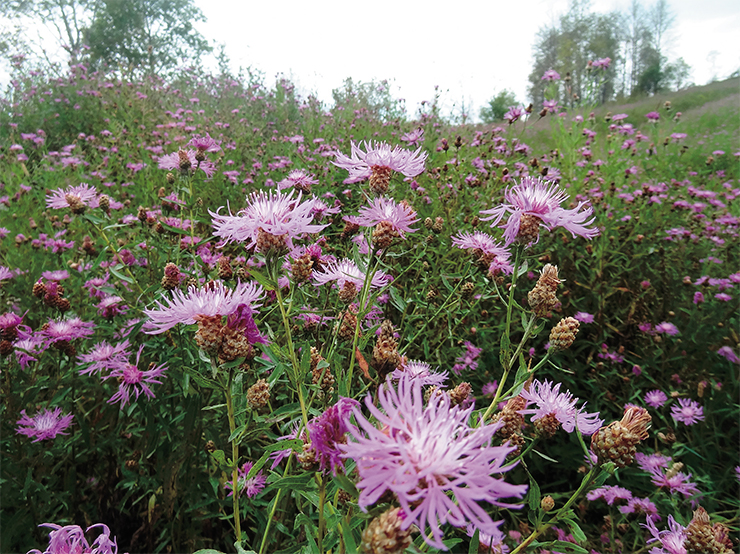
In the Siberian Federal District, there is a tendency towards a decrease in the numbers of invasive species from west to east and from south to north. Some species are currently categorized as having low invasiveness impact, however, with the ongoing climate change and increasing anthropogenic effect, they may become significantly more invasive in the near future. Siberia is just beginning to tackle the invasive species problem, but it is high time to take specific steps to prevent and minimize damage from the invasion of alien plants.
Illegal naturalization
Naturalization of alien species may become a starting point for their further development, ultimately resulting in acclimatization accompanied by genetic and morphologica changes. Usually, when evaluating the degree of invasive species naturalization, researchers stress a number of features, such as the ability to persist in new conditions for extended periods, overcome geographical, climatic and biological barriers for flowering and fruiting, create stable populations in the new environment, expand into new territories, etc… The process is long and varies from species to species, and its algorithm is encoded in the genotype.
K. A. Sobolevskaya, a prominent Russian botanist, studied the flora of Eastern Siberia and came to the conclusion that putting a species into cultivation requires considering not only the current ecology of the species, but also the environmental conditions in which it evolved.
AN AMERICAN WITHOUT A RUSSIAN NAME In 1993, T. A. Terekhina, an Altaian botanist, discovered an unusual and previously unrecorded species in the south of the Altai Kray. It turned out to be an alien species of American origin, the rag sumpweed Cyclachaena xanthiifolia.This species was described by Johann Fresenius, a German doctor and botanist, based on specimens grown from seeds, following the conventional procedure that dates back to the times of Carl Linnaeus. The plants were grown in the Frankfurt Botanical Garden from seeds collected in North American prairies in 1836. This date may be considered the starting point of the rag sumpweed conquest of Europe, and eventually of Asia.
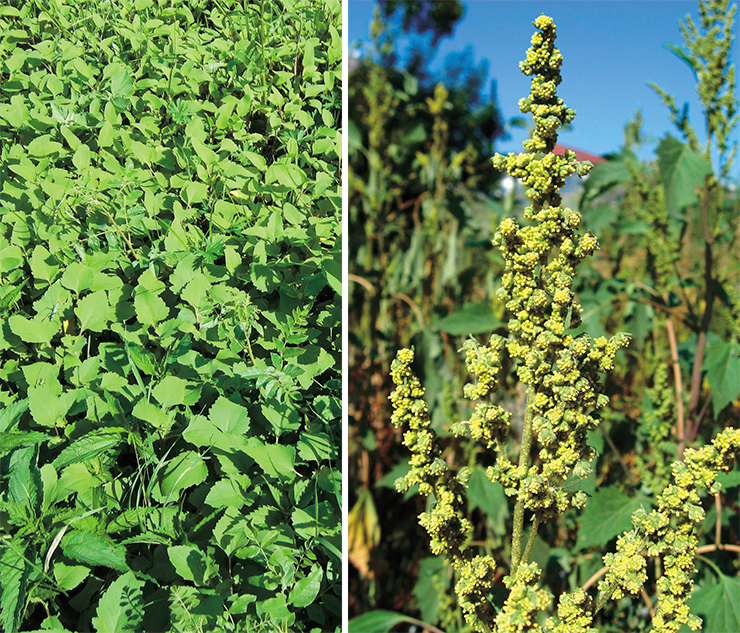
In the middle of the XIX century, this plant was grown in the Kyiv Botanical Garden; in the beginning of the XX century, the botanist N. V. Zinger, collected it near Kyiv. The scientist remarked that there was no sumpweed left in the botanical garden, however, it had formed thickets taller than human height in the outskirts of the city. In 1947, it was recorded near the city of Voronezh; by 1970, it became a common species in the European part of the USSR.
In 1989, an isolated population of the rag sumpweed was found near Karaganda; twenty years later, it has become a common and extremely aggressive species that pushes out meadow herbs and weeds. In Siberia, sumpweed grows in disturbed locations around the Kulunda lowland, on the Ob plateau and Fore-Altai plains of the Altai Kray; it has been recorded in the Novosibirsk and Tomsk regions.
This wind-pollinated plant is a known allergen that can cause hay fever (pollinosis), often exacerbated by morbid asthmatic symptoms. Further climate warming and increase in the area of disturbed localities will cause massive expansion of this harmful plant
One such group is the “montane xerophytes”, which currently grow in dry locations, but have retained features of mesophytes, which inhabit sufficiently hydrated areas. Bringing these species into cultivation opens up their genetic potential. Apparently, such hidden abilities help many species to successfully naturalize in new environments, becoming invasive. Climate warming facilitates the naturalization of invasive species.
Harm and benefits
The so-called transformer species, which actively invade natural and semi-natural communities and change the appearance of these ecosystems, are considered the most dangerous. They can form single-species conglomerations, preventing local species from reproducing, cause allergies in humans and poisoning in animals. In European countries, damage from such species is estimated to amount to $28 million annually.
In Siberia, the box elder, or ash-leaved maple (Acer negundo), a ubiquitous tree native to the Rocky Mountains of North America, became a transformer species. It was introduced early in the XX century as a fast growing ornamental tree, and was recommended as an urban shade tree and for windbreak hedges. Academician I. Yu. Koropachinskiy remarks that the acclimatization of the box elder in Siberia was difficult at first, but today it has become a major nuisance both in urban areas and in forestry. It completely displaces native trees from river floodplains, forming bare-ground forests lacking the herbaceous and shrub layers.
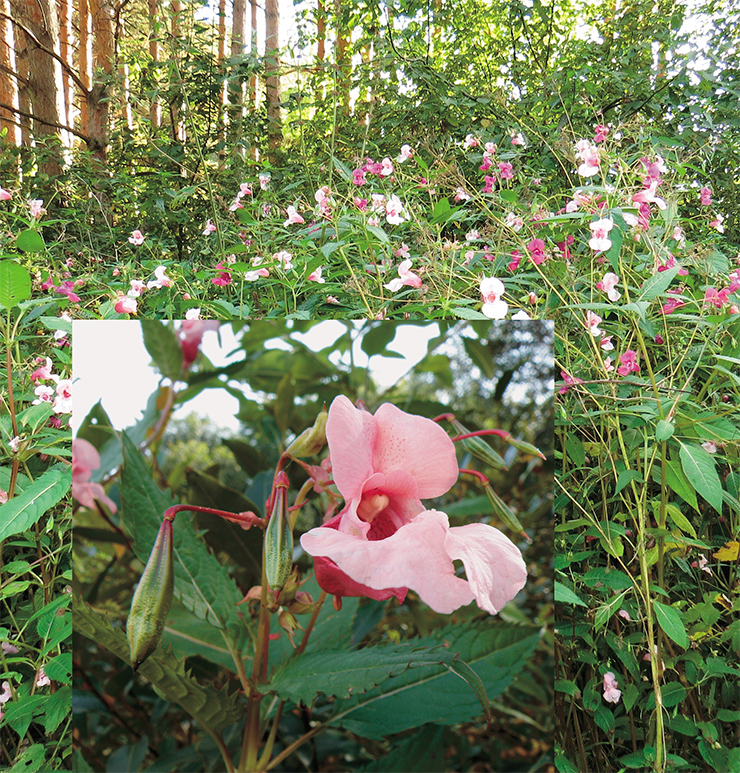
The Sosnowskiy hogweed, from the Caucasus and Trans-Caucasus geographic region, os another telling example. This species was widely introduces as a silo crop, and has become an aggressive weed which displaces local species around Eastern Europe and Eastern Russia alike. Attempts to fight it have been futile so far. In Siberia, it has been recorded in the Altai Republic, the Altai Kray, Novosibirsk and Tomsk regions. The ongoing climate warming will cause it to further expand its range in Siberia.
In 1993, in the south of the Altaiskiy Kray, professor T. A. Terekhina (2000) found yet another «transformer» species – the rag sumpweed, an weedy American plant toxic to cattle and poultry and allergenic to humans. Nowadays, this species has spread across all southern and western pre-montane regions of the Altaiskiy Kray, as well as in the Novosibirsk and Tomsk regions.
However, invasive plants do have some positive qualities. For instance, the study of the biotic relationships of the Himalayan balsam revealed its important role in the conservation of the diversity of pollinator insects in urbanized territories. The pineappleweed can be used as a medicinal plant along with the better known chamomile.
THE PINEAPPLEWEED WORLD TOUR Many of us know this fragrant little herb, with head-shaped petal-less inflorescences. It feels like it has inhabited our backyards forever, and it is hard to imagine that this modest chamomile-scented flower is a daring traveler that crossed the ocean and thousands of miles of land.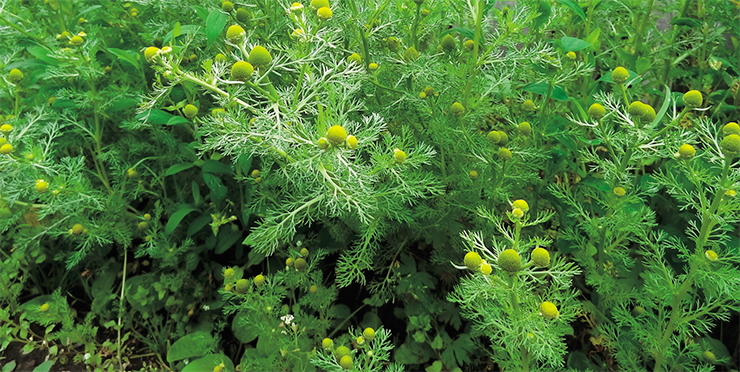
Mathematician A. V. Zinger, who gained popularity by his book “Curious Botany”, reports that the pineappleweed began spreading across Europe beginning in the 1870’s. Its seeds were brought from North America along with wheat. “I remember perfectly well how my father went on a botanical excursion along the banks of the river Oka, about 60 kilometers away, and brought back the first specimen of the pineappleweed, which became a highlight of his collection. Five years later, it was easily encountered along the whole stretch of the Moscow-Kursk railway, which cutst through our district from north to south. Five more years passed, and it spread further and further from the railroad; another five years passed, and all well-trodden streets, yards, and wastelands were covered in pineappleweed. Walking on pineappleweed carpets, it was funny to recall the joy of my father when he found a «rarest novelty”. (Zinger, 1951).
There are other opinions. I. Maltsev, a well-known Russian botanist (1926) believed that the pineappleweed appeared in Russia earlier, in the 1840’s, and was originally grown in the gardens of the Emperor’s Botanical Garden on the Apothecary Island in Saint-Petersburg. Forty years later, the pineappleweed had become a common weed around St. Petersburg.
Another reputable botanist, E. V. Wulf, believed that pineappleweed had traveled from America to France as late as in 1875 and quickly spread across the continent. Together with the builders of the Trans-Siberian Railway, it crossed the Urals and persisted in the freezing cold of Siberia. There, Russian transplants crushed it in their weather-beaten hands and wondered where such a savory wonder had come from. Riding the wheels of cargo carts, pineappleweed crossed Western and Eastern Siberia and ended its world tour in the Russian Far East
Another invasive species is the Jerusalem artichoke, which is a valuable edible, medicinal, melliferous and forage plant. Due to the high content of the polysaccharide inulin in its roots it has commercial value for the production of fructose and alcohol.
Hans Christian Andersen, who lived in the XIX century, wrote two remarkable essays about the burdock. In «the Gardener and the Family», he writes about burdock with love and tenderness: «Here stood the neglected burdock, so pretty in its freshness that it can be outstanding in a bouquet». Another story by the Danish author is called «The fate of burdock». Among other useful qualities of burdock, the donkey notes that it is a superb feed.
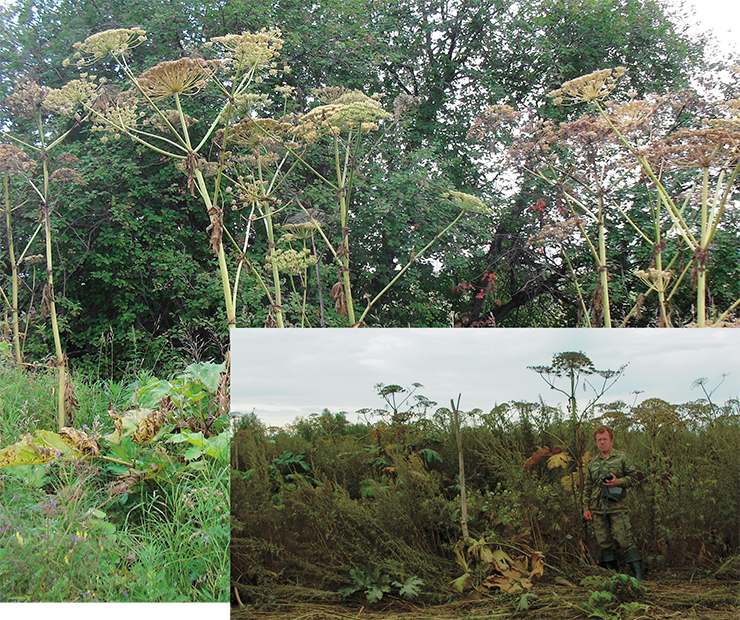
We must keep in mind that the place of origin of the burdock is not Europe and not even Siberia – it comes from the steppes of Mongolia and Southeast Asia. It was likely introduced centuries ago along with the military campaigns of Genghis Khan and Batu Khan. Burly Mongolian horses with burrs in their tails and manes brought this plant to Eastern Europe. Its further westward expansion is connected with Napoleon’s invasion, or rather, with the pursuit of the fleeing emperor by ataman Platov’s cossacks. It is likely that our species of burdock «hitchhiked» all the way to Paris tangled in the tails of the cossacks’ horses.
In Andersen’s times, burdock had become a rather ubiquitous plant, albeit with a bit of exotic air about it. After several centuries, it found an ecological niche in which it thrives, yet has not become an invasive species.
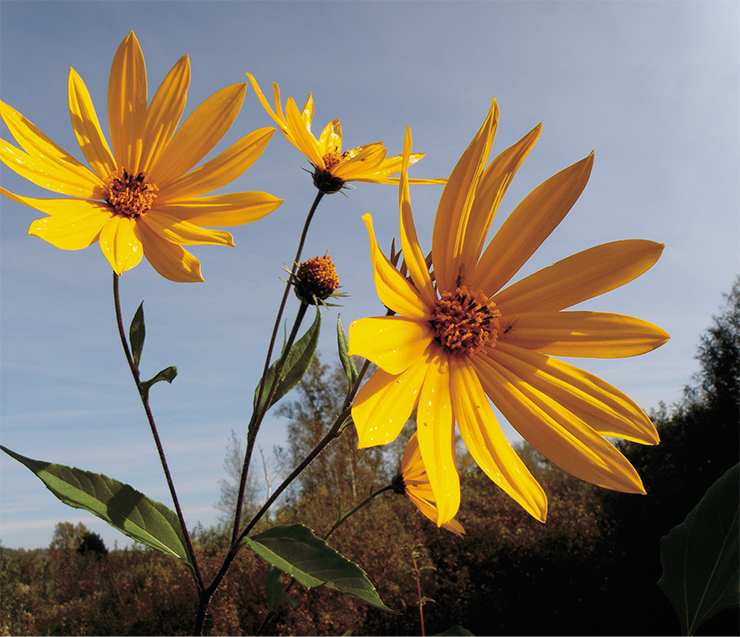
Similarly, many other alien species which have now moved from their native habitats will eventually become common components of local floras. This does not mean that we can keep a blind eye to the ecological «crimes» of transformer species.
We live in an amazing time when the world around us is changing fast, and this concerns everything: our lifestyle, climate, and even the biodiversity of our flora. And quite a few of these changes are our fault.
References
Black Book of Siberian Flora / Yu. K. Vinogradov (ed.). Novosibirsk: Geo, 2016. 440 p. [in Russian].
Black-list of invasive plants of Russia / Yu. K. Vinogradova, T. V. Akamatova, O. A. Anenkhonov et al. // Problems of industrial botanics of industrially developed retions: IV Intl. Conf. and report session of PROONGEF / Minsitry of Natural Resources of Russia on the issues of introduction of innovative technologies into applied practices of coal-mining industries (Kemerovo, Oct. 1–2, 2015.). Kemerovo, 2015. P. 68–72. [in Russian].
Ebel A. L. Strelnikova T. O., Kupriyanov A. N. et al. Invasive and potentially invasive species of Siberia // Bulletin of Main Botanical Garden. 2014. I. 200. P. 52–61. [in Russian].
Kleunen M., Dawson W., Essl F., et al. Global exchange and accumulation of non-native plants // Nature. 2015. N. 9. V. 525. P. 100–107.
Linnaeus K. Philosophia Botanica. Moscow: Nauka, 1989. 456 p. [in Russian].


